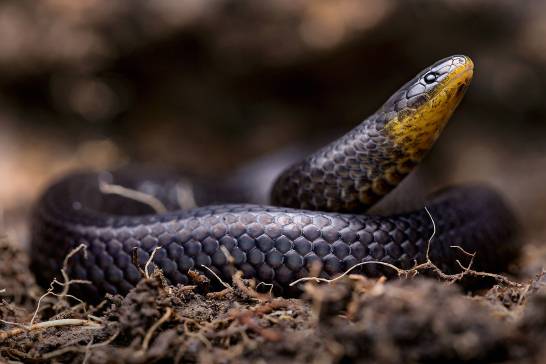The Andes of Ecuador are inhabited by a group of snakes belonging to the genus to attract. This group of terrestrial snakes is the most species-rich in the world (there are now 150 known species across the planet), but few have seen one or even heard of its existence. Probably because they are shy and remain hidden for most of their lives.
Alexandre Arteagaresearcher of Khamai Foundationleads a research team that discovered three new cryptozoic snakes — which live underground — hidden under cemeteries and churches in remote Andean villages. The study was published in the journal ZooKeys.
“This discovery is just the first step in a much larger conservation project. Now, thanks to the encouragement of the Zoological Society for the Conservation of Species and Populations (ZGAP), we have begun the process of establishing a natural reserve to protect earth snakes. This action would not have been possible without first revealing the existence of these unique and enigmatic reptiles, even if it meant momentarily disturb the peace of the dead in the cemetery where they lived,” says Arteaga.
This discovery is just the first step in a much larger conservation project. We have already started the process to establish a nature reserve to protect terrestrial snakes
The new snakes were found by chance in the crypts and are small, cylindrical and quite archaic in appearance. Diego Pinan, a teacher in the town where one of these new reptiles was found, says: “When I arrived in El Chaco in 2013, I saw many dead snakes on the road; others were beaten with machetes or stones. Now, after years of talking about the importance of snakes, both the children and their parents, still wary, enjoy them and protect them”.
‘Atractus’ was found hidden among the graves of the elders of the Andean Amaluza people, province of Azuay, Ecuador./ Alejandro Arteaga
Piñán kept the dead snakes he found in bottles full of alcohol and Arteaga later used them to describe one of the species as new to science.
A destroyed habitat for these reptiles
Another aspect described in Arteaga’s study is the fact that most of the new snakes’ native habitat has been destroyed. Due to the removal of the forest line, terrestrial snakes are forced to take refuge in spaces used by humans (living and dead) where they usually die.
In this particular case, two of the new snakes are facing a high risk of extinction in a near future. The three species are named after institutions or individuals that support the exploration and conservation of remote cloud forests in the tropics.
the earth serpent Discovery of Atractus was found hiding underground in a small cemetery in a remote village, while the other two were found in an old church and a small school.
No study is truly complete if it does not include the name of the species, and most of those that share the planet with us are not described.
to attract was named in honor of the Explorers Club Discovery Expedition Grants Initiative, a grant program that supports researchers and explorers around the world in their quest to mitigate climate change, prevent the extinction of species and cultures, and ensure the health of the Earth and its population.
‘Atractus zgap’ was found in a small school garden in the Andean city of El Chaco, Ecuador. / Alejandro Arteaga
For your part, Atractus zgap It is named after ZGAP, a conservation program for unknown but highly endangered species. Lastly, Atractus michaelsabini It is named after a young nature lover, Michael Sabingrandson of American philanthropist and conservationist Andrew ‘Andy’ Sabin.
“Naming species is at the heart of biology. No study is really complete if it does not include the name of the species and most of those that share the planet with us are not described”, he concludes. Juan M. Guayasaminco-author of the study and professor at the Universidad San Francisco de Quito (Ecuador).
Alejandro Arteaga examines the holotype of the ‘Atractus’ discovery. / David Jacome
Reference:
Arteaga A. and others. Leaving no stone unturned: three additional new species of to attract terrestrial snakes (Serpentes, Colubridae) from Ecuador discovered using a biogeographic approach”. ZooKeys
